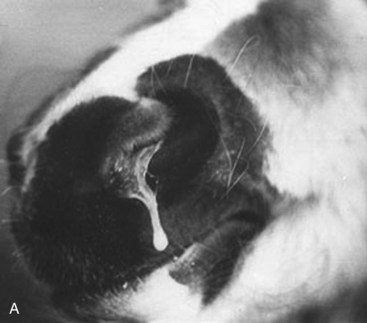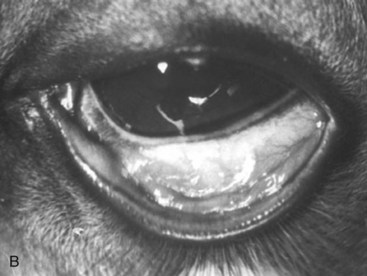Adenovirus
Basic Information 
Epidemiology
Species, Age, Sex
• Primarily affects Arabian foals with SCID, infecting the respiratory tract, gastrointestinal (GI) tract, liver, pancreas, and bladder.
• SCID foals are generally clinically affected by adenovirus at 1 to 3 months of age.
• Immunosuppression may predispose other foals to susceptibility to adenovirus, and adenovirus may contribute to development of bacterial pneumonia.
• There is a possible role in respiratory disease in adult horses.
• Coinfection with equine herpesvirus-1 or -4 or equine rhinitis virus may result in clinical respiratory disease in normal foals.
• Concurrent infection with rotavirus is often observed in foals affected with diarrhea.
• About 70% of yearlings and 2-year-old horses are seropositive.
Clinical Presentation
Physical Exam Findings
• Infection is usually subclinical in normal foals and adult horses.
• Affected foals demonstrate signs of acute respiratory infection, including nasal discharge, conjunctivitis, and eventually bronchopneumonia (Figure 1).
• Thoracic auscultation is likely abnormal.
• The horse may be febrile and depressed.
• Infection of the GI tract results in low-grade diarrhea unless concurrent rotavirus infection is present, which then leads to severe diarrhea.
Etiology and Pathophysiology
• Two isolates have been identified: EAdV1 (associated with respiratory disease) and EAdV2 (associated with diarrhea).
• Transmitted by close-contact aerosolization or physical interaction.
• The virus replicates in respiratory epithelial cells, resulting in sloughing of cells and a hyperplastic response.
Stay updated, free articles. Join our Telegram channel

Full access? Get Clinical Tree




